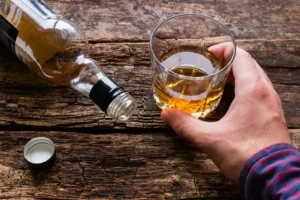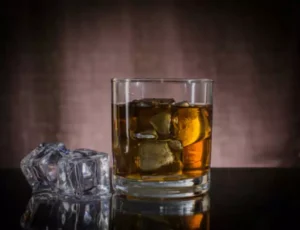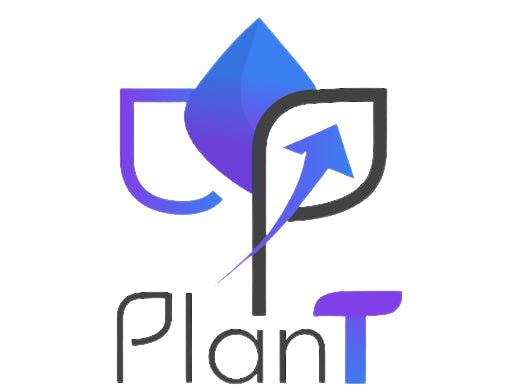
Recently mutations in the SERT gene, commonly known as 5’- hydroxtryptamine transporter linked polymorphic region (5’-HTTLPR), has been implicated in cases of alcoholism. One mutation is known as the “long” alcohol and dopamine allele and the other mutation is known as the “short” allele. The difference between the two alleles is that the “short” version of the allele has a 44 bp deletion in the 5’ regulatory region of the gene.
The dopamine system and brain reward circuitry
- However, we found no significant differences in the cholinergic contribution to dopamine release between multiple abstinence and control males in Cohort 3 but we did find a trend toward reduced cholinergic driven dopamine release in the putamen of alcohol-consuming subjects.
- One possibility is that basal dopamine levels are near 5 nM at all points throughout the striatum; alternatively, it is possible that microdialysis simply reflects the average of large fluctuations around some unknown actual baseline level.
- It’s found in a wide range of alcoholic beverages including beer, wine, and spirits like vodka, whiskey, rum, and gin.
One possibility is that a dopamine-independent pathway is also involved in ethanol reinforcement [132, 133]. We examined the behavioral evidence for overlapping mechanisms of alcohol and non-drug reward AB by conducting pairwise Spearman’s partial correlations among the three AB tasks, covarying for beverage effects. AB values were residual values from the linear regression analysis with the beverage effect added back; because this calculation provides a separate adjusted value for each trial type, a mean value was calculated to get a single AB score for each session.

The dopamine system and alcohol dependence

Similarly, in a limited set of putamen slices from the female cohort, we observed a potential reduction in cholinergic driven dopamine release in alcohol monkeys relative to controls (Fig. S1). Once isolated from cholinergic influence, dopamine terminals from the multiple abstinence male subjects in control and alcohol treatment groups responded similarly to varying frequency stimulation. Our findings with blockade of β2-containing nAChRs resemble previous findings in rodent striatum both with respect to antagonist inhibition and decreased inhibition at higher/phasic stimulation frequencies. Thus, the cholinergic contribution to dopamine release is conserved in primate striatum.
- Furthermore, the author hopes that the present text will be found useful to novices and experts alike in the field of neurotransmitters in alcoholism.
- This can involve having unprotected sex, having sex with someone who is a stranger and might be dangerous, or not taking care of the responsibilities you have in life because you are busy pursuing sex.
Dopamine, behavior, and addiction
These lesioned animals continue to lever-press for the direct dopamine agonist, apomorphine, following these lesions, confirming that the lesioned animals remember their training history and have normal motor capacity [97, 98]. Finally, cocaine and amphetamine induces long-term synaptic changes in glutamate-GABA synapses in the striatum [99–101]. Here, we review recent literature focusing on alcohol-induced neuronal adaptations. We discuss molecular mechanisms that contribute to the development of this disorder, and describe evidence outlining potential new avenues for medication development for the treatment of AUD. Finally, we consider recent work examining how alcohol-induced plasticity manifests on the level of neural circuit activity and release of neuromodulators to influence decisions of when and how much to drink. Studies about the relationship of D1 receptors and affinity for alcohol have had inconsistent results.

- We found that chronic alcohol self-administration resulted in several dopamine system adaptations.
- For once the brain senses a certain activity giving it pleasure; it will rewire the brain chemistry in a way which makes the person want to have more of that activity.
- Alcohol (ethanol) is a central nervous system (CNS) depressant drug that, depending on its blood concentration, can induce various manifestations such as relief from anxiety, disinhibition, ataxia, and general anesthesia.
- This activity provides 0.75 CME/CE credits for physicians, physician assistants, nurses, pharmacists, and psychologists, as well as other healthcare professionals whose licensing boards accept APA or AMA credits.
Nicotine causes conditioned place preferences; this is blocked with dopamine antagonists [116]. Nicotine enables LTP in glutamatergic inputs to the dopamine system and primes the ability of cocaine to induce LTP in the amygdala [117, 118], a structure anatomically related to the striatum [119]. Advances in neuroscience continue to shed light onto regulatory mechanisms relevant for alcohol use.
Studies in animal models provide initial hints to possible contributors to these differences. Furthermore, rats undergoing intermittent access to 20% alcohol in 2 bottle choice paradigm exhibit distinct profiles of intake ranging from low alcohol consumers to rats that exhibit slow https://ecosoberhouse.com/ or rapid escalation of excessive drinking [125]. Projections from mPFC to the striatum have been implicated in mediating specific aspects of drinking behaviors [101–103]. These projections have been targeted to exert bidirectional, long-lasting control of alcohol drinking [103].

Dopamine and AUD
Understanding your risks can be important, but you should also be aware that anyone can develop an addiction. Having a healthy level of dopamine is necessary, and if your body isn’t producing enough, it can lead to problems such as depression and insomnia. You can read more about the neurobiological basis of addiction in a previous post we covered.
Surprisingly, a number of growth factors/RTKs such as Bdnf and the glial-derived neurotrophic factor (Gdnf) are endogenous factors that limit alcohol use [60,63]. Interestingly, activation of Midkine/Alk signaling also acts to limit alcohol intake in mice [64,65]. In contrast to Bdnf, Gdnf and Midkine, fibroblast growth factor 2 (Fgf2)/Fgf receptor 1 (Fgfr1) signaling promotes excessive drinking in rodents [66,67]. It is noteworthy that the ACC and FIC––the prefrontal brain regions for which increased FC following P/T depletion mediated AB in this study––are major hubs of the salience network that is involved in conditioning and assigning incentive salience to drugs and drug-related cues [112].
Availability of data and materials
- Hebb has postulated a mechanism by which repeated synaptic input from a (predictor) cell that reliably precedes another (reward) neuron becomes linked to its target.
- The GAL4 transcription factor can then activate any UAS-based reporter or effector transgene in a spatiotemporal specific expression fashion.
- For example, the activity of mRNA binding protein fragile-X mental retardation protein (Fmrp), which plays an important role in translation [47], is enhanced by alcohol in the hippocampus of mice resulting in alteration in the expression of synaptic proteins [48].
- The results point to a significant role of dopamine for both alcohol and non-drug reward AB and indicate that specific dopamine-dependent functional connections between frontal, limbic, striatal, and brainstem regions mediate these behaviors.
- As an important regulator of behavioral output, dysregulation of dopamine neurotransmission is implicated in theories of AUD development [13, 16, 35].
- Another area requiring further research relates to individual differences in resilience and susceptibility to AUD.
While rewards and punishers elicit responses regardless of emotional state, it is predictors of rewards or punishers that depend on motivational arousal. In resting animals, it is pacemaker firing that varies as a function of internal state and determines when, and to what degree, the animal responds to reward-predictors. Burst-firing can also influence motivational arousal; consider the behavior of an animal when a pheromone-emitting conspecific passes nearby. Motivational arousal varies over time and, in resting animals, determines when a previously sated animal starts to become hungry and interested in seeking food. The burst-firing in response to predictors of rewards or punishers develops with age, as the animal learns about the environment. The burst-responses should not really be seen as travelling from the unconditioned rewards and punishers to their predictors; rather, the process of burst-firing develops anew in response to predictors that involve a Hebbian mechanism [42, 43].

About the Author
When people develop a behavioral addiction, they spend too much time pursuing these behaviors. They neglect other important tasks and feel like they must engage in the behavior just to feel normal. It is this inability to stop despite the negative consequences that make these behaviors an addiction. It occurs naturally in our bodies, and we can’t directly take it as a food or drug. However, it may be possible to get addicted to any activity that increases our dopamine levels.
